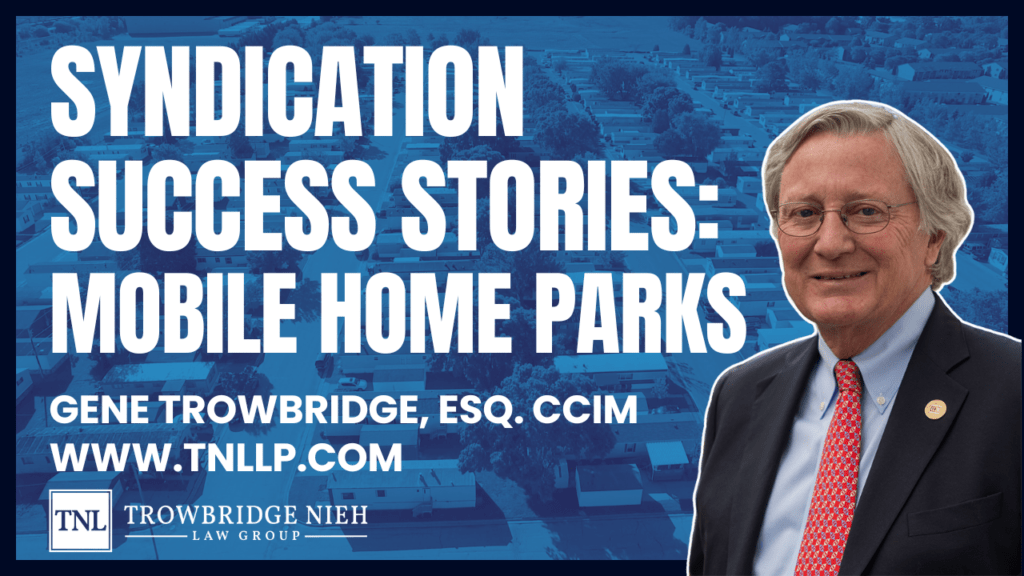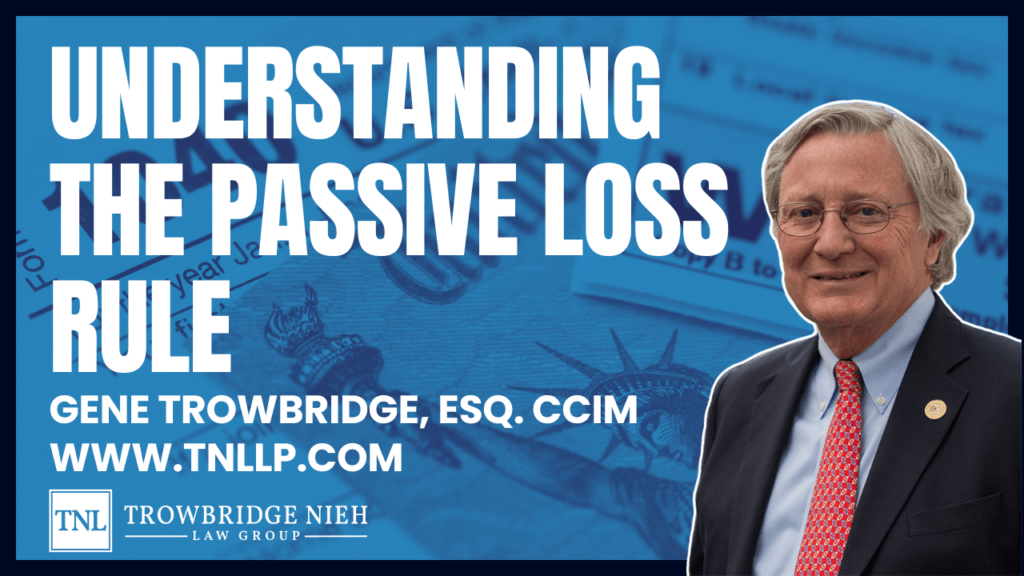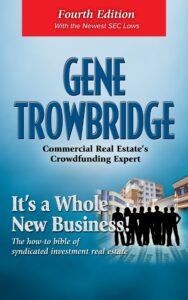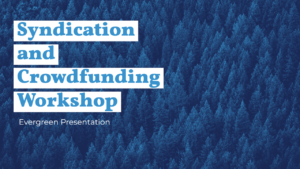Trowbridge Law Group now drafts Regulation A documents! But is it the right security exemption for you?
In this TBD with TLG, syndication attorneys Gene Trowbridge and Jonathan Nieh discuss Regulation A, how it compares and contrasts to Regulation D, and who it may be the proper security exemption for.
Transcript:
Gene Trowbridge:
Well welcome everyone. Welcome to another issue of TBD with TLG. The topic is always to be determined and our law firm is the Trowbridge law group. Jonathan Nieh and I are together today to discuss some very important stuff with you. Hello there, Jonathan.
Jon Nieh:
Hi Gene, how’s it going?
Gene Trowbridge:
It’s going good. Good. So for TBD, we decided to talk about Regulation A plus offerings. Cause we’ve had quite a few calls about that in the past month and, those Reg A plus offerings are something that’s ideally suited for the right type of client. And we’ve had some experience with clients being successful using Reg A plus offerings. And so I’m really going to turn it over to Jonathan because Jonathan is the one in the office who is most conversant with how this works and he’ll be able to give us the low down.
And so I may jump in from now and then, but other than that, take it away, Jonathan.
Jon Nieh:
Thanks Gene. Yeah, I guess I am our firms resident Reg A expert. So I guess I’ll be the one talking about Reg A and you know, if you want me to clarify stuff, you can kind of act as like the audience member and ask me questions on behalf of the people watching. So, what is Regulation A? I like to think of it from kind of like a big picture perspective, right? So when you’re talking about securities and selling securities and doing offerings, you have to go back to the basic rule, which is if you’re selling a security, it has to be registered with the SEC or exempt and Regulation A is just another exemption, right? So, most of our clients are familiar with Regulation D I mean, that’s what we talk about the most because you know, most of the people raising money in this space are using Regulation D but Regulation A I is just another exemption that people can utilize. So to kind of give you an idea of where it falls in this, you know, private versus public offering space it’s kinda like a spectrum, right? So on one side, there’s completely private offerings under Regulation D rule 506(b), right? Where, you know, you can’t advertise, you can only bring in investors that you have a preexisting and substantive relationship with versus completely public side which is, you know, like companies that are selling their securities on the stock market companies that are public companies that have done public offerings, like Apple, Facebook, Twitter, all those companies, those are public companies, and anybody could go, you know, buy their securities on the stock market. Where does Regulation A fit along in this? It’s kind of in the middle, a lot of people call Regulation A like doing a mini IPO. So that’s kind of where Regulation A fits in this grand scheme of things, but getting into, you know, the specific rules of Regulation A, I like to use a Regulation D to kind of compare the two to kind of illustrate, you know, how Regulation A works in the rules that you have to follow when doing a Regulation A offering.
Jon Nieh:
So the differences between Regulation D and Regulation A well specifically, let’s talk about Regulation D rule 506(b), right? The one where you can’t advertise. So Regulation A allows you to advertise, right? You could solicit your offering to people online, essentially. You could take in pretty much any investor, right? So under Regulation D Rule 506(b) investors have to be either accredited or sophisticated up to 35 sophisticated investors. Regulation A doesn’t have that requirement. You could bring in anybody accredited, non-accredited, sophisticated, whoever. Anybody can invest in a Regulation A offering. Regulation D, there is no cap on the amount of money that you could raise. So, you could raise, you know, hundreds of millions of dollars actually under Regulation D. But on Regulation A, there is a cap on the amount of money that you can raise.
Jon Nieh:
So, you know, Regulation A, plus also known as a tier two offering, you could raise $50 million, a Regulation A, tier one, you could raise $20 million, some of the other differences. So under Regulation D there is no approval process with SEC. You, you know, you do your offering and then you file, what’s known as a form D with SEC, which is basically just putting the SEC on notice that you’re raising money, but there’s no requirement. The SEC has to approve that, right. You just start raising money and you’re good. However for Regulation, a, there is kind of like an approval process, right? You have to submit your offering documents to the SEC before you can start raising money. And they usually come back with comments, you know, they have issues with some of the things that you’re saying in your offering documents.
Jon Nieh:
So you have to make those changes. You know, Cubs goes back and forth several times could take, you know, six months to a year before you finally get approval from the SEC, and then you can start raising money. So in that sense, it’s kind of more like, you know, doing a public offering, doing a registration, like a mini IPO another difference. So under Regulation A, you are required under tier two to get a CPA or accounting firm to audit your financials. Under Regulation, D that’s not required. You don’t need to do an audit of your financials. And then another big thing that I think a lot of people don’t talk about is ongoing reporting requirements. So if you do a Regulation A offering you’re required to do an annual reports to the SEC. There isn’t that requirement for Regulation D so those are kind of like the main differences between the two, but to kind of, I guess, recap, the main points is Regulation A allows you to advertise and you can advertise to anybody, right?
Jon Nieh:
So it doesn’t matter whether or not they’re accredited or not or sophisticated, you can advertise to those people and potentially raise money from, from anybody. What else did I want to talk about? So I did mention tier one and tier two there’s, there’s these like levels within Regulation A also known as a Regulation A and Regulation A plus, and there’s important distinction between the two. And I think you know, a lot of people kind of gloss over sometimes is the fact that, you know, addition to the cap on the amount of money that you could raise. So remember tier one is capped at $20 million, and then tier two is capped at $50 million. One of the biggest differences though, between the two is if you’re doing a tier two Regulation A plus offering, you actually are preempted from state law.
Jon Nieh:
So, it’s kinda like Reg D, right? Where you know, you, when you do a reg D offering, you don’t really have to worry about a specific state law from each state that you’re raising money from. So you know, what that means is if you don’t, if your exemption doesn’t preempt state law, then obviously you have to follow each individual state’s law that you’re raising money from. And that could potentially lead to you know, a lot of costs in compliance with each individual state. So tier two preempt state law, but tier one, if you’re doing a tier one offering that doesn’t preempt state laws. So if you do a tier one offering and you’re raising money from, you know, 10, 15 different States, you potentially have to go to each state and get approval from each state before you can start raising money from investors from those States.
Jon Nieh:
So it could potentially add up and a lot of money to do a tier one offering. So generally speaking, if someone were to come to me and ask, you know, whether or not to do a tier one versus a tier two you know, nine times out of 10, it’s going to be, just do a tier two offering. You know, you might not need $50 million. You might be only looking for $20 million, but the cost of complying with, you know, 20 different state’s laws is going to add up and not really be worth it. So yeah, I mean, that’s, it that’s basically it, I mean, Reg A it’s, it’s simple, right? Like I can explain it in 10, 15 minutes. But yeah, I mean, I think, I think we should talk about who Regulation a is meant for and who is not meant for
Gene Trowbridge:
That’s what I was thinking. You know, w we get a client who calls us and says we want to do an offering, and we go through the question and answer session with the client. And one of the things I ask first is how much do you want to raise? Okay, well, that’s, that’s a good question. If I want to raise a $3 million, I don’t need to do a Reg A, you know, if I want to raise a hundred million dollars, I can’t do a Reg A. So that’s a qualifying question right there. The next question I ask is, do you want to advertise if they don’t want to advertise? Well, let’s have a better answer. Yes. I want to advertise Gene. Well, then you really don’t only have two choices. 506(c).
Gene Trowbridge:
Reg A. Okay. So you’ve put those two things together. How much do you want to raise? And do you have to advertise? And you get some feeling of whether they could do both. Let’s say someone wants to do, as you said, 20 million. Well, that’ll work and Reg A, that’ll work in 506, and they want to advertise. So that’ll work in 506(c) and Regulation A plus, with the exception that, right, Jonathan, if we do 506, you can only take accredited investors. So the next question is, okay, so you need to advertise, you’re going to raise $20 million. Do you want to limit your money raising to accredited investors? And if they say, no, the path is set. The only way they can go is, is Reg A. So the people that we’ve seen that do Reg A are people who want to stand up in front of a group of people, a large group of people that they don’t know, they don’t have they, they know that they’re not all accredited, but they want to give them opportunity to invest in their fund. The only game in town is Reg A. And didn’t, we have a call this week with someone Jonathan, I’m trying to remember how many subscribers this person had on his YouTube channel.
Jon Nieh:
Yeah, I think he has like an 80 or 90,000 subscribers.
Gene Trowbridge:
Okay. And so that was his question. I want to put something out in my YouTube channel and let everyone who is a subscriber invest with me. Well, first of all, he doesn’t have a preexisting relationship with all those people. So, 506(b) is gone. He could do that. As long as he’s only going to take accredited investors under 506(c). But if he wants to take everyone it’s Reg A and that’s really the type of person I think that that we need when you, I’m not going to name any names, but when you go out and hear things on the radio and maybe in print or television of people who are raising money from everyone at any time, if you look deep into it, you’ll find that that’s probably going to be a Reg A plus offering, or the, like this, this one company that’s out there, it’s raising money for their apartment, their apartment fund up in the Northeast. They do say accredited investors only. So, you know, right away that that’s 506(c) did I get all that, right?
Jon Nieh:
Yeah. Yeah. That was perfect. And you, I mean, you explained it probably better than I could, but I do. I, I guess I want to highlight one thing that you kind of touched on is, you know, sometimes we get calls from people that have never done the offering before that never raised money before. And they say, Oh, I heard about Reg A. Like I want to do Reg A. This is definitely not for people that are first timers, right? I mean, we talked about that guy with 90,000 subscribers on YouTube and he could potentially reach out to his 90,000 subscribers. But honestly, from what I’ve seen, I don’t even think that’s enough. I think you need, you know, way more way more followers to have a successful Reg A offering. You can look at the people that have done Reg A’s right. These are all public information. It’s all published on SEC’s website. You can see the people that have done it and have done successful Reg A offerings. And they probably have, you know, millions of followers. So that’s just something to keep in mind.
Gene Trowbridge:
And you should have a track record because this is not for the faint of heart. First of all, you’re not going to do a specified offering one property. Cause it’s going to take, I’m going to suggest that it’s going to take four to six months to get this done. I may be optimistic. I’ve heard other people say six to eight months to a year, but I don’t, I don’t see that in real practice. I do see four to six, seven months. So it’s not going to be for a specific offering. It’s going to be for somewhat of a blind pool. Some of the Reg A offerings, Jonathan, you and I have seen are racehorses, intellectual property, solar panels, blind pools and real estate. So it, it’s not for a specific property. So I think you have to have someone to talk to before you start a Reg A.
Gene Trowbridge:
And then I think you have to have some sort of a track record in what you’re going to raise your money for, or you’ll just die on the vine. Another thing that would be good would be selling notes or selling paper where people come in and they just want a yield. And then the sponsor takes the money and goes out and invests whatever they do that, that’s it? Yeah. Well, I think, do you have any parting words before we close this episode of a TBD?
Jon Nieh:
Yeah. I mean, if people have more questions about, you know, Reg A or reg D or just, you know, securities offerings in general, feel free to reach out. We do free 30 minute consultations. If you go to our website, sign up for a free consultation or, you know, hit us up on, on Facebook or leave some comments here in the video, we’re happy to engage and answer your questions.
Gene Trowbridge:
Go to YouTube and subscribe to our channel.
And Jonathan, isn’t it. The case that we do have a YouTube video on Regulation A or we’re going to,
Jonathan Nieh:
We have one that I did. That’s pretty short like a quick overview of Reg A. I think it’s there. But I mean, this one’s going to be on our YouTube, right? So people are watching on YouTube right now.
Gene Trowbridge:
Great. Well that wraps up another episode of TBD with TLG
End Transcript





